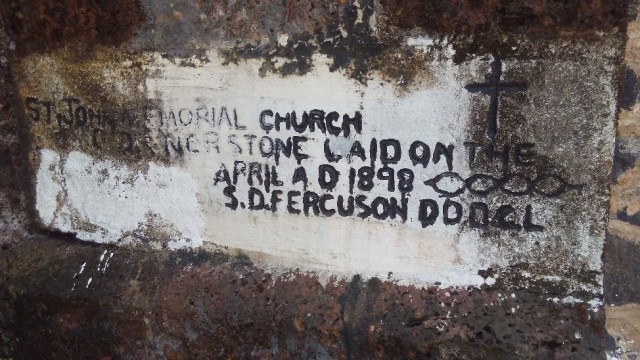According to international travel guidebooks on West Africa – whose sections on Liberia are invariably the smallest – Robertsport is THE place to holiday in Liberia. I too was eager to visit Robertsport, but not for the same reasons.
My great-great aunt lived there from 1904 to 1907 and again from 1909 to 1910 as a missionary. My mother grew up hearing stories of her experience but initially, no one in the family could recall exactly where in West Africa she was based. Liberia was a highly possible location.
Fortunately, a collection of her documents were housed at the Virginia Historical Society. During home leave in the US, I took the two-hour trip to Richmond, VA and discovered that she had indeed been based at the St. John’s Episcopal Mission in Robertsport.
[To any academic researchers reading this, I highly recommend a look at Margaret Matthew’s papers. She discourses on Bishop Samuel Ferguson – the head of the Episcopal Church in Liberia – the spread of Islam in Grand Cape Mount, and in what most resonated with me as an American, the lack of access to familiar foods.]
I was back in Liberia, armed with this knowledge for about six months before I made it to Robertsport. I did not have a car and kept hoping I might be able to grab a private ride. This did not materialize, so I eventually bit the bullet and made the voyage by public taxi.
While the ensuing experience was not as comfortable as traveling in an SUV, I was in for quite a pleasant surprise, one that highlights the joys of traveling in a small country like Liberia. One of the passengers in the car was the wife of the current principal of the Episcopal High School, founded by the missionaries in the 1950s!
While this was a seemingly unlikely stroke of good luck – I hadn’t the slightest idea as to where the Mission was, and the car dropped off the principal’s wife at her house just below the Mission – it highlights one of the greatest things about travelling or touring Liberia, the easy access to personalities that is not easily attainable in a larger country.
The drive from Douala to Robertsport took about three hours and cost roughly five United States dollars. The final leg on a dirt road offered beautiful views of Lake Piso. I went directly to the Mission which from a commanding hilltop, offered exquisite views of the lake and the Atlantic Ocean.
The visit was also a somber one. The hallowed ground of the Mission was not spared during the civil war and the scars from the conflict remained visibly obvious. While the school had a sparkling new coat of paint, the church appeared slightly more worn out. AÂ number of once impressive stone structures and the sprawling house of the pastor laid in ruins.
The cornerstones for a number of the buildings remained intact. Lancford Memorial Hall and Brunot Hall were built at the turn of the 19th century, just before my aunt arrived. I could imagine these structures in their heyday, playing a prominent role in the Christianization and western education of Liberians, operating in a system where my aunt and her husband – white Americans – were subordinate to a black bishop whose mother was born a slave.
As a beach resort, I am not sure if Robertsport lives up to the hype. The facilities at Nana’s and Kwepunha seemed rather lacking. But one needs to keep things in perspective. Tourism in Liberia is not at the level where it will draw visitors seeking comfort and pampering, although I understand Libassa does quite well in that regard.
Liberia provides bountiful, serendipitous opportunities to meet with fascinating individuals exploring a painful history, and enjoying the beautiful scenery. The country offers a variety of very cheap seafood and an intriguing array of alcoholic drinks from fresh palm wine and homemade egg nog, to the curious product lines of Ritco and Nicom distilleries.
Given Liberia’s historical ties to the US, it should, in particular, be seeking to encourage heritage tourism from that country – there is no reason for Ghana to have a lock on that. The first country in Africa that W. E. B. DuBois visited was Liberia, Nina Simone lived in Monrovia for several years, and the Congo Town house that Nelson Mandela spent several months in still stands.
Featured photo by Brooks Marmon











